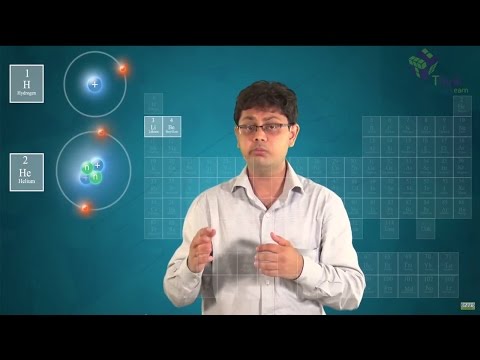What is Protium?
‘The basic hydrogen atom – a single proton circled by a single electron is also called protium’.
An isotope of an element is an atom that has the same number of protons but a different number of neutrons.
Protium is the regular version of hydrogen and is represented by the letter H. Protium has one proton and no neutrons. Deuterium has one neutron and one proton – unlike the more common hydrogen atom which has one proton, one electron and no neutrons.
Table of Contents
- Protium Symbol
- Recommended Videos
- Protium Structure
- Protium on the Periodic Table
- Atomic and Physical Properties of Protium
- Frequently Asked Questions on Protium
Protium Symbol
The lighter isotope of hydrogen is known as ” protium” but no chemical symbol other than 1H has been assigned to it.
Atoms of the same element can have different numbers of neutrons; the different possible versions of each element are called isotopes. The numbers of protons and electrons are the same for each isotope, as they define the element and its chemical behaviour.
The element symbol of an isotope is
AEZ
Where
- A = number of protons + number of neutrons = mass number
- Z = number of protons = number of electrons = atomic number
The shorthand writing of the element symbol for the isotope protium is
1H1
Recommended Videos

Protium Structure
The most common isotope of hydrogen is protium (a hydrogen atom). A hydrogen atom is an atom of the chemical element hydrogen. The electrically neutral atom contains a single positively-charged proton and a single negatively charged electron bound to the nucleus by the coulomb force.
Protium on the Periodic Table
In the long form of the periodic table also, hydrogen has been placed along with the elements of group 1 but slightly separated to indicate its distinctive character and thereby confirming the views of Mendeleev.

Protium is represented by the symbol H. Its atomic number is 1 and its mass number is also 1. It has one proton in its nucleus and one electron in its 1s orbital. Naturally occurring hydrogen contains 99.985% of this isotope.
Hydrogen isotopes occupy the same position in the periodic table because all of them contain one proton each. Their chemical behaviour is similar because of the same electronic configuration. However, they differ in their physical properties which are mass-dependent.
Atomic and Physical Properties of Protium
Some of the atomic and physical properties of the three isotopes are given below.
| Property | Protium |
| Relative atomic mass/g mol-1 | 1.007825 |
| Melting point/K | 13.957 |
| Boiling point/K | 20.39 |
| Density /g L-1 | 0.09 |
| Enthalpy of fusion /kJ mol-1 | 0.117 |
| Enthalpy of vaporisation /kJ mol-1 | 0.904 |
| Critical temperature/K | 33.19 |
| Critical pressure/bar | 12.98 |
| Enthalpy of dissociation/kJ mol-1 | 435.9 |
| Nuclear spin quantum number | 1/2 |
Frequently Asked Questions on Protium
What is the use of Protium?
Protium contains pantoprazole which is the active ingredient. Protium is a selective “proton pump inhibitor,” a medication that reduces the amount of stomach acid produced. It is used to treat stomach and intestine acid-related illnesses.
Where is Protium found?
This has a total abundance in the oceans of ~156.25 ppm, which accounts for about 0.0156 percent of all hydrogen present on earth. The deuterium nucleus, called a deuteron, contains one proton and one neutron (mass number = 2), whereas the far more popular isotope of hydrogen, the protium, has no neutrons in the nucleus.
Why is Protium most abundant?
H (atomic mass 1.007825032241(94) u) is the most common isotope of hydrogen with an abundance of over 99.98%. Because the nucleus of this isotope consists of only one proton. The proton was never observed to decay and thus, hydrogen-1 is considered a stable isotope.
Where is tritium from?
Tritium is a radioactive type of hydrogen that exists naturally, formed in the atmosphere when cosmic rays interfere with air molecules. Therefore, tritium is present worldwide in very low or trace concentrations in groundwater. This is also a by-product of the nuclear power plants producing electricity.



Comments